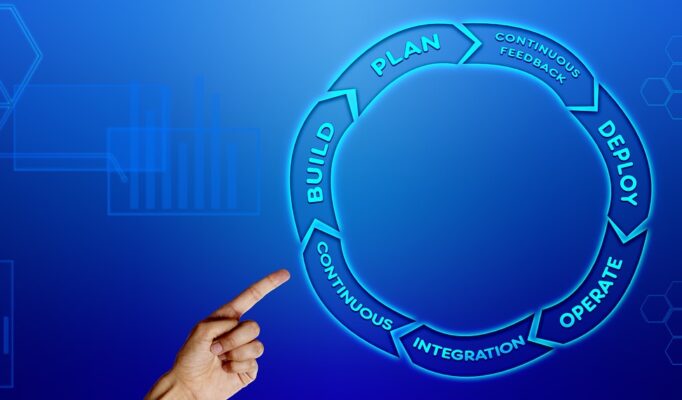DevOps: The Latest Trends in Software Development
DevOps, a blend of “development” and “operations,” represents a cultural and technological shift in software development aimed at enhancing collaboration and productivity. By integrating development and IT operations, DevOps seeks to accelerate the software delivery lifecycle while maintaining high quality and reliability. Here’s a look at the latest trends shaping DevOps today.
1. Continuous Integration and Continuous Delivery (CI/CD)
Continuous Integration (CI): CI focuses on frequently integrating code changes into a shared repository. This practice helps in detecting errors early, reducing integration issues, and improving code quality. Developers commit code changes regularly, triggering automated builds and tests to ensure the new code works with the existing codebase.
Continuous Delivery (CD): CD builds on CI by automating the deployment process, enabling code changes to be automatically and reliably released to production environments. This trend reduces deployment times and minimizes the risk associated with manual deployments, ensuring that features and fixes are delivered faster and more reliably.
2. Infrastructure as Code (IaC)
IaC is a practice where infrastructure is managed and provisioned through code rather than manual processes. Tools like Terraform, Ansible, and Puppet allow developers to define infrastructure using configuration files, which can be versioned and tested like application code. This approach enhances consistency, repeatability, and scalability, making infrastructure management more efficient.
3. Containerization and Orchestration
Containerization: Containers, such as those provided by Docker, allow applications to be packaged with all their dependencies, ensuring consistent performance across different environments. This trend simplifies deployment, scaling, and management of applications by providing isolated environments that can run anywhere.
Orchestration: Tools like Kubernetes and Docker Swarm are used to manage and orchestrate containers at scale. They handle tasks such as container deployment, scaling, and networking, making it easier to manage large numbers of containers and ensuring that applications are resilient and can handle varying loads effectively.
4. Microservices Architecture
Microservices architecture involves breaking down applications into smaller, independent services that can be developed, deployed, and scaled individually. This approach promotes flexibility and agility, as teams can work on different services simultaneously without interfering with each other. It also improves fault tolerance, as issues in one microservice are less likely to affect the entire application.
5. DevSecOps
DevSecOps integrates security practices into the DevOps process, emphasizing the importance of building security into every stage of the development lifecycle. This trend addresses the need for proactive security measures by automating security testing, conducting regular vulnerability assessments, and incorporating security best practices into CI/CD pipelines. The goal is to ensure that security is a shared responsibility across development, operations, and security teams.
6. Artificial Intelligence and Machine Learning in DevOps
AI and ML are increasingly being used to enhance DevOps practices. AI-driven tools can analyze large volumes of data to predict potential issues, automate routine tasks, and provide insights into performance optimization. Machine learning algorithms can assist in anomaly detection, predictive maintenance, and automated decision-making, making the DevOps process more efficient and responsive.
7. Observability and Monitoring
Observability extends beyond traditional monitoring by providing deeper insights into system performance and behavior. Modern DevOps practices emphasize comprehensive observability, including logging, metrics, and tracing, to gain a holistic view of applications and infrastructure. This enables teams to detect and resolve issues quickly, improve reliability, and enhance the overall user experience.
8. Serverless Computing
Serverless computing abstracts the underlying infrastructure, allowing developers to focus solely on writing code. Services like AWS Lambda and Azure Functions automatically handle scaling, patching, and infrastructure management, reducing operational overhead and enabling faster development cycles. This trend aligns with DevOps principles by simplifying deployment and improving resource efficiency.
Conclusion
DevOps is continually evolving, with emerging trends driving improvements in software development and operations. By embracing practices such as CI/CD, IaC, containerization, microservices, and integrating security and AI, organizations can achieve faster, more reliable software delivery. Staying updated with these trends is crucial for teams aiming to enhance collaboration, streamline processes, and deliver high-quality software in today’s competitive landscape.





